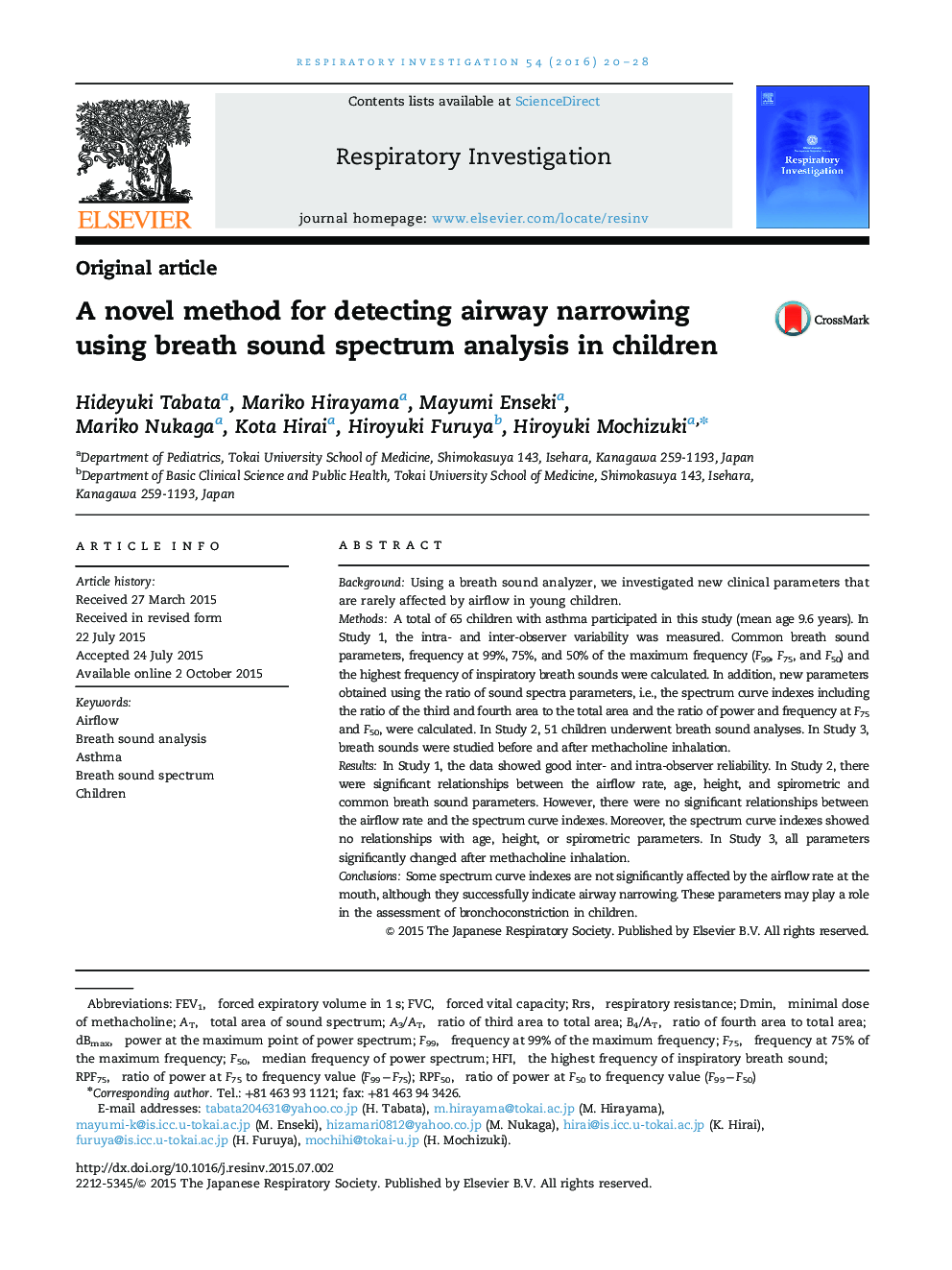| Article ID | Journal | Published Year | Pages | File Type |
|---|---|---|---|---|
| 3418625 | Respiratory Investigation | 2016 | 9 Pages |
BackgroundUsing a breath sound analyzer, we investigated new clinical parameters that are rarely affected by airflow in young children.MethodsA total of 65 children with asthma participated in this study (mean age 9.6 years). In Study 1, the intra- and inter-observer variability was measured. Common breath sound parameters, frequency at 99%, 75%, and 50% of the maximum frequency (F99, F75, and F50) and the highest frequency of inspiratory breath sounds were calculated. In addition, new parameters obtained using the ratio of sound spectra parameters, i.e., the spectrum curve indexes including the ratio of the third and fourth area to the total area and the ratio of power and frequency at F75 and F50, were calculated. In Study 2, 51 children underwent breath sound analyses. In Study 3, breath sounds were studied before and after methacholine inhalation.ResultsIn Study 1, the data showed good inter- and intra-observer reliability. In Study 2, there were significant relationships between the airflow rate, age, height, and spirometric and common breath sound parameters. However, there were no significant relationships between the airflow rate and the spectrum curve indexes. Moreover, the spectrum curve indexes showed no relationships with age, height, or spirometric parameters. In Study 3, all parameters significantly changed after methacholine inhalation.ConclusionsSome spectrum curve indexes are not significantly affected by the airflow rate at the mouth, although they successfully indicate airway narrowing. These parameters may play a role in the assessment of bronchoconstriction in children.
